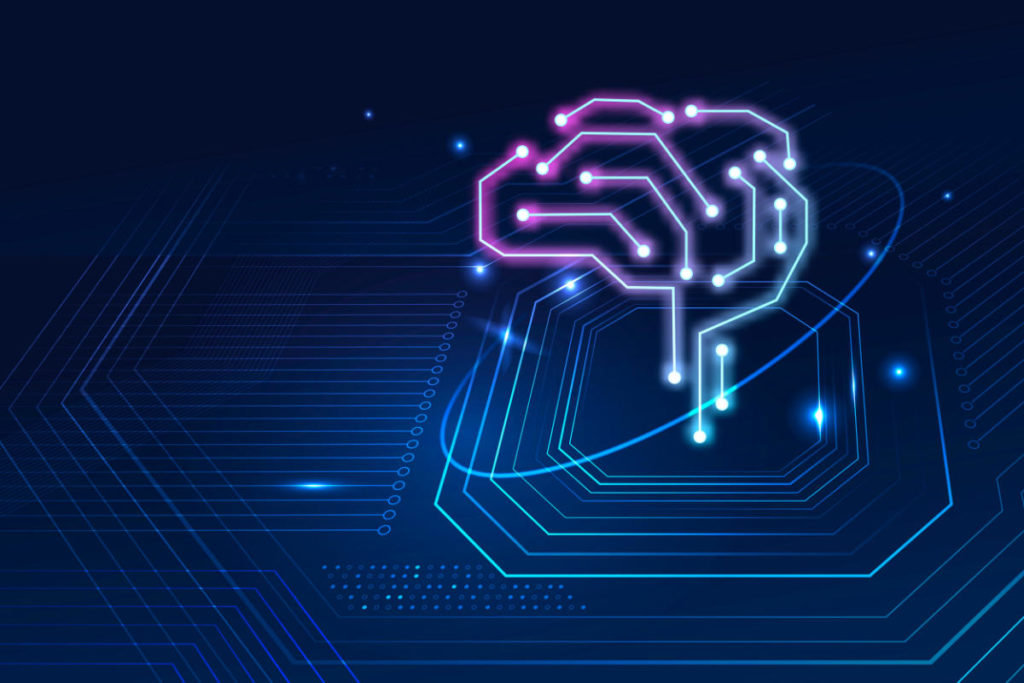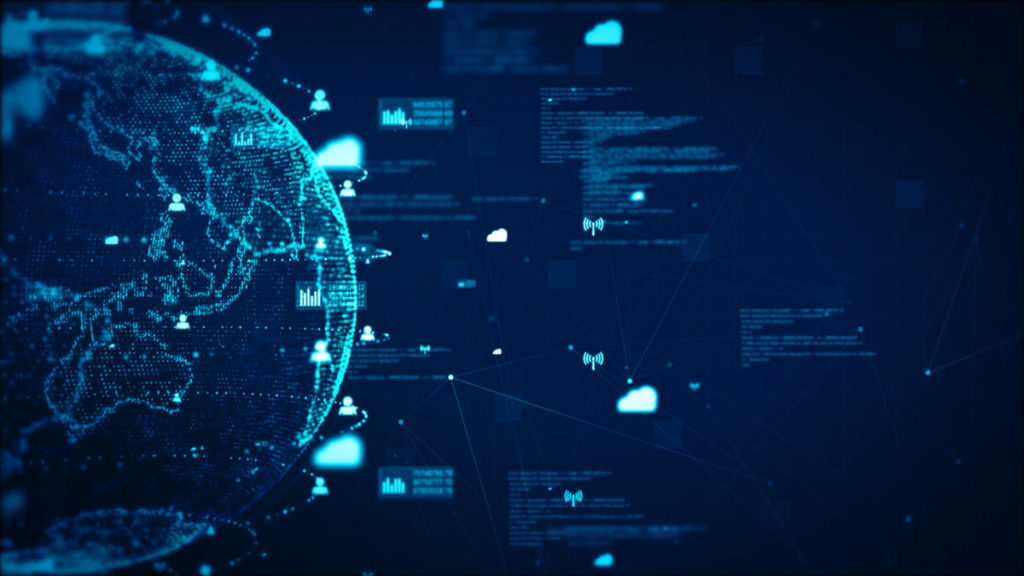
Estimated reading time: 7 minutes
When we talk about log management we refer to a precise process which consists of the centralized collection of data that comes from different operating environments such as: devices, databases, applications and much more. Logs are produced by various system events , many of which are particularly important in the business environment.
So let’s see some important details regarding log management.

The importance of collection-in-log-management
The procedure for collecting log data is important to achieve various objectives at the company level. The main ones are: to verify the vulnerability; manage possible security problems; control access to data and applications; the monitoring in real time ; check for any malfunctions at the application level.
From a regulatory point of view, then, log management is very important at a company level as allows you to observe the most important principles concerning data protection . This is established by the “EU 95/46 / EC” directive. It is also required by the obligations established by the “ General Data Protection Regulation (RGPD or GDPR) “.
Hence, these features illustrate how important good log management is and how it can help companies prevent potentially invasive events before they occur.
This type of action corresponds to what, in jargon, is called “Privacy by Design”. According to this principle, it becomes necessary to execute the right strategies to avoid creating risks and problems related to violations.
The-problems-to-face-in-log-management
Log management needs the correct balance between the dynamic availability of resources and the growing number of log data . In addition, from the first step of acquiring the log data, it is appropriate to consider several elements. These often generate various complexities such as, for example: the quantity of sources to be taken into account; the number of data logs created; the multiplicity of events that give life to data log ; the types of data log ; the method of acquiring the data logs ; the compliance of the data log protection systems.
Log management needs the correct balance between the dynamic availability of resources and the growing number of log data . In addition, from the first step of acquiring the log data, it is appropriate to consider several elements. These often generate various complexities such as, for example: the quantity of sources to be taken into account; the number of data logs created; the multiplicity of events that give life to data log ; the types of data log ; the method of acquiring the data logs ; the compliance of the data log protection systems.
It is therefore advisable to plan the strategies that allow you to adopt the right solutions for your log management staff. In this way, technicians will be able to intervene while respecting the requirements already mentioned.
The characteristics of a log-management infrastructure
The infrastructure for log management is formed by the union of hardware, software and network elements that are set up so that they can communicate effectively with each other. The communications between these components are made within the same network that is used for the common activities of the company.
Nevertheless, for a company it is also important to take into account the possibility of collecting data using a different network so that any spyware attacks or other incidents will alter, intercept or delete the data.
If from the logistical and architectural point of view it is not possible, in a company, to carry out this second possibility, alternative measures should be adopted such as, for example, data encryption.
Summarizing, therefore, a log management infrastructure should ensure compliance with the following requirements: maintaining information that serves to achieve the collection objective following the principles of “minimization” and “proportionality” ; ensure that data remain unalterable throughout their life span; ensure the integrity of the data collected without making changes; keep the data for a limited period of time.
The data-aggregation at the company-level
As companies grow and reach large numbers of applications within their environment, data collection becomes an increasingly important and decisive challenge.
In addition, if we take into account the difficulty of collecting sufficient data logs to be able to remain compliant, respect for privacy standards and security issues that arise from modern threats, we easily realize how the collection becomes an increasingly complex challenge.
So, at the enterprise level, the key to creating an efficient collection system is the ability to dynamically capture data in real time from all available sources. Have a solution that allows you to put your data in a central location, such as a data lake , and facilitate filtering , transformation, classification, allows you to make the log management task easier for the company.
SOCaaS and the advanced log management system
A very advanced solution is the one offered by the SOCaaS , in particular by its component SIEM , which leverages the innovation of artificial intelligence. This allows you to analyze the data collected so as to find possible suspicious data.
In addition, a qualified technical intervention is always made available at any time of the day with precise and non-distracting tasks. The intervention allows you to verify the alarm notifications that are generated by the system so as to exclude false positives , intervening to eliminate the threat and give constant reports over time .
The ever increasing data collection and the analysis of artificial intelligence allow to make the service very convenient and complete.
The potential of the SOCaaS-system for companies
As we have just seen, it is very convenient for companies to rely on a SOC service (SOCaaS). The greatest potential is represented precisely by the innovation brought about by artificial intelligence that allows you to achieve maximum results regarding the constant and continuous analysis of data so that it has the certainty of identifying possible threats in a very short time . Thanks to this system, therefore, risks will be prevented and mitigated.
An added value, then, is not having to hire specialized technicians with specific skills in identifying and verifying threats. Those who rely on this service will also be able to receive reports on the situation and notifications in case of problems.
SOCaaS, therefore, allows you to take the right precautions against those still unknown techniques and has the ability to find the link between data concerning possible attacks with still unknown systems. This is thanks to the analysis of user behavior and infrastructure intities ( UEBA ).
In addition, the structure of the system is designed to bring about constant improvement. The synergistic work between technicians and artificial intelligence allows us to identify even unconventional breach attempts.
For companies it means improving their defenses by adapting them based on the data collected previously.
SOCaaS is perfect for those companies that want to work safely using network-based infrastructures. This is a guarantee of defense against cyber attacks .

The-advantages of choosing our SOCaaS for log-management
Choosing to rely on our SOCaaS has several benefits.
The first is to save money in both the short and long term. In fact, you will avoid buying dedicated hardware and specific software . Plus, you won’t even need to hire new employees or upgrade the skills of those who already work.
Another benefit is having the professional support of technicians who update every day to have the skills to fight new types of threats. This type of assistance is priceless and it is extremely difficult to obtain within the company staff. This is also due to the current shortage of professionals in the sector.
A further advantage is to have always updated technology available . You will not have to worry and worry about always updating the software, because these, solely responsible for the collection of data for SOCaaS, are always kept to the latest version.
Do you want to get more information to learn more about the SOCaaS functionality of SOD? Contact us to find out how we can help you keep your company’s defenses up.
Useful links:

Estimated reading time: 6 minutes
As the cybersecurity threat landscape becomes increasingly sophisticated, service providers, such as SOD, need to take additional precautions to protect their customers’ networks. An information management system and monitoring SIEM is an excellent choice in this respect.
This system, in fact, helps mitigate cybersecurity threats from two different angles, all from a single interface . The SIEM monitoring system collects information from multiple sources: network data, threat information feeds, compliance regulations, firewalls, etc. Next, uses that data to power features designed to help IT administrators respond to threat events in real time.

Advantages of SIEM monitoring
In contrast to individual security control systems such as asset management or network intrusion detection, SIEM allows you to dig deeper into security vulnerabilities by unifying information from various systems – even very and offering unprecedented visibility into events occurring in the system.
SIEM is not a threat detection system in and of itself, but enhances the security tools already in use by providing real-time insights to work from . In particular, SOD uses a Next Gen SIEM in a SOAR ( Security Orchestration, Automation and Response ) which also includes advanced behavioral analysis tools ( UEBA ).
If you put high-quality log files into a SIEM tool, you receive high-quality insights into network security . This information can help improve network security protocols.
Unfortunately, many administrators treat SIEM implementation as a solution to be set up and then forgotten. To experience the full benefits of managing information and security events , you need to implement a set of best practices to optimize your solution, starting with security logging.
The logs of a SIEM
How does security monitoring fit into SIEM implementation best practices ? If you look at the SIEM in its main components, it is a log management system .
All the information that a SIEM tool collects is in the form of logs, or records of events occurring within an organization’s IT infrastructure and network.
Examples of logs collected by SIEM include, but are not limited to: Firewalls, routers, wireless access points, vulnerability reports, partner information, antivirus and antimalware.
However, as SIEM tools have a very broad reach and constantly collect log data from all parts of the system, can be a bit complicated and impractical to implement . SIEM best practices help avoid pain points along the line of operation. This way you use SIEM as effectively as possible right from the start.

Best practice
1. Start calmly
The most common mistake made in implementing SIEM monitoring is trying to do too much too soon . Before you even start looking for a SIEM solution, in fact, it is best to define the scope of your SIEM implementation and think about what you want SIEM to do for your network and infrastructure.
We start by isolating the objectives , taking stock of existing security protocols and brainstorming how these protocols fit into the future SIEM implementation. You can also segment anything you want to monitor into groups and define how you want to monitor them. This helps ensure that you have a clear plan for logging.
Once an initial planning has taken place, the SIEM system does not yet have to be implemented across the entire IT infrastructure. It is better to proceed piecemeal.
You should then test the SIEM monitoring solution on a small section of the system to see how it works. Only then are key security vulnerabilities identified that should be addressed immediately and proceed with implementation in subsequent segments.
Setting up SIEM monitoring step by step, rather than running everything right away, will help ensure that logging works in harmony with the rest of the IT section .
2. Think about the requirements
SIEM monitoring can help the company demonstrate compliance with security regulations and audits, but only by knowing what these standards are in advance . Before committing to a SIEM system, you create a list of HIPAA, GDPR, HITECH and any other IT regulations that you need to comply with. The list is then used to compare the required regulations with the solutions that are put into practice.
Not only does this narrow down the list of standards, it will force you to consider how much log data you actually need. Keeping the correct amount to be compliant, also aligns with best practices of SIEM logging and monitoring .
Obviously, the solutions and protocols to follow are not the same for everyone and need to be adapted according to the position of the individual company. For this particular aspect, SOD can help your company both in gathering the information necessary to identify which standards to follow, and in the standards verification once implemented.
3. Fix the correlations
SIEM correlation streamlines its implementation, allowing you to configure the system according to the specific needs of their customers. SIEM works by collecting data from multiple sources and then filtering, analyzing and correlating it to determine if it deserves to be reported as a security alert.
For this it is essential to correlate the rules and set alarm thresholds based on the type of data and their origin . It is important to remember, in fact, that SIEM is designed to find connections between events that would not otherwise be related to each other.
Setting up a SIEM monitoring system is a delicate but fundamental operation to improve the security system for a particular company.
4. Collect data efficiently
Through a SIEM monitoring system it is possible to collect such an amount of data that it could become complicated to manage. It becomes important to choose in a balanced way which data to use in order to optimize the right amount without losing the advantage of having the entire system under control .
Among the data that it is better not to leave out are: Successful permissions and failed attempts, changes to user privileges, application errors and performance problems, opt-in and in general all the actions made by users with administrative privileges.
The following are excluded: information whose collection is illegal, banking information or credit card data, encryption keys, passwords and personal data .
5. Have a plan in case of a detected threat
Choosing the right SIEM solution and employing logging best practices is only part of the job. You need to have an action plan in case of cyber threat .
For the company that relies on a MSSP as SOD, this means making sure that monitoring is only the first part of the service provided. Ideally, SIEM monitoring is the first piece of a well-designed SOAR that puts in place professional operators, alert notifications and a recovery plan in accordance with the type of data put at risk .
In this respect, the SOC as a Service we offer covers most of the eventualities.

Conclusions
Monitoring is a fundamental part of the corporate security system and a SIEM is one of the ways to put it into practice. However, we must not stop at the collection of information, we must know how to treat, enrich and analyze it.
SOD offers comprehensive services that implement SIEM monitoring systems. The implementation obviously implies a “calibration” of the systems and of the correlations between the data in order to always offer the most suitable solution.
If you would like more information about our products, do not hesitate to contact us, we will be happy to answer your questions.
Useful links:
Useful links:
Next Generation SIEM: where are we?

A common definition of data exfiltration is the theft, removal, or unauthorized movement of any data from a device. Data exfiltration typically involves a cybercriminal stealing data from personal or corporate devices, such as computers and cell phones, through various cyberattack methods.
Failure to control information security can lead to data loss which can cause financial and reputational damage to an organization.
How does a data exfiltration happen?
Data exfiltration occurs in two ways, through attacks from outsiders and through threats from within. Both are major risks, and organizations need to ensure their data is protected by detecting and preventing data exfiltration at all times.
An attack from outside the organization occurs when an individual infiltrates a network to steal corporate data or user credentials. This is typically the result of a cybercriminal injecting malware into a device connected to a corporate network.
Some malware strands are designed to spread across an organization’s network and infiltrate others, seeking sensitive data in an attempt to extract. Other types of malware remain dormant on a network to avoid being detected by organizations’ security systems until data is subversively extracted or information is gradually collected over a period of time.
Attacks can result from malicious insiders stealing your organization’s data and sending documents to your personal email address. Typically the data is then sold to cyber criminals. They can also be caused by inattentive employee behavior that sees corporate data fall into the hands of bad actors.
Types of Data Exfiltration
Data exfiltration occurs in various ways and through multiple attack methods, mostly on the Internet or on a corporate network.
The techniques cybercriminals use to extract data from organizations’ networks and systems are becoming increasingly sophisticated. These include: anonymous connections to servers, Domain Name System (DNS) attacks, Hypertext Transfer Protocol (HTTP) tunneling, Direct Internet Protocol (IP) addresses, fileless attacks, and remote code execution.
Let’s see in detail some attack techniques to know what we are talking about specifically.
1. Social engineering and phishing attacks
Social engineering attacks and phishing attacks are popular network attack vectors. They are used to trick victims into downloading malware and entering their account credentials.
Phishing attacks consist of emails designed to appear legitimate and often appear to come from trusted senders. They usually contain an attachment that injects malware into the device. Other types contain a link to a website that appears legitimate but is forged to steal the login credentials entered. Some attackers even launch targeted phishing attacks to steal data from a specific user. Often the targets are the executives of a company or known individuals.
To defend against these types of attacks, it’s best to recognize them immediately and trash the emails. In a company it is possible to help the process through an ad hoc training course, based on data collected internally by the company through a controlled test. SOD also offers this service, if you are interested, you will find more information on the page of the service itself.
2. Outgoing email
Cybercriminals check e-mails to retrieve any data coming out of organizations’ e-mail systems. The recovered data can be calendars, databases, images and planning documents. These provide sensitive information of value or information that is useful for recovering valuable data.
3. Download to unsafe devices
This method of data exfiltration is a common form of accidental insider threat. The attacker accesses sensitive corporate information on his trusted device, then transfers the data to an insecure device. The insecure device could be an external drive or smartphone that is not protected by corporate security solutions or policies, which puts it at risk of data exfiltration.
Smartphones are also susceptible to data exfiltration. Android devices are vulnerable to the installation of malware that take control of the phone to download applications without the user’s consent.
4. Upload to external devices
This type of data exfiltration typically comes from bad guys. The internal attacker can extract data by downloading the information from a secure device, then uploading it to an external (insecure) device. This external device could be a laptop, smartphone, tablet or USB stick.
5. Human error and unsafe behavior on the network
The cloud provides users and businesses with a multitude of benefits, but together there are significant risks of data exfiltration. For example, when an authorized user accesses cloud services in an insecure way, it allows an attacker an access route from which he can retrieve data and take it off the secure network. Human error also plays a role in data mining, because appropriate protection may no longer be in place.
How to spot a data exfiltration attack
Depending on the type of attack method used, detecting data exfiltration can be a difficult task. Cybercriminals using more difficult-to-detect techniques can be mistaken for normal network traffic. This means that they can lurk in networks unnoticed for months and even years. Data exfiltration is often only discovered when the damage has already been caused.
To detect the presence of at-risk users, organizations must use tools that automatically discover malicious or unusual traffic in real time.
One tool with this capability is SOC (also offered as a service: SOCaaS) which implements an intrusion monitoring system, as well as an automatic system that verifies user behavior. When the SOC detects a possible threat, it sends an alert to the organization’s IT and security teams who can take action and investigate the situation.
SOC works by searching for and detecting anomalies that deviate from regular network activity. They then issue an alert or report so administrators and security teams can review the case.
In addition to detecting automatic threats, organizations can also construct the entire sequence of an event as it occurred, including mapping to a known kill chain or attack framework.
Using a SOCaaS, for a company that manages sensitive data, is an advantage from many points of view. Being offered as a service, the company will not have to invest in setting up a specialized IT department for its SOC, will not have to hire additional personnel and will be able to count on security systems that are always updated with qualified and always available operators.
For more information, do not hesitate to contact us.
Useful links:
Test your business with ethical phishing attacks
Customers
Twitter FEED
Recent activity
-
SecureOnlineDesktop
Estimated reading time: 6 minutes L'impatto crescente delle minacce informatiche, su sistemi operativi privati op… https://t.co/FimxTS4o9G
-
SecureOnlineDesktop
Estimated reading time: 6 minutes The growing impact of cyber threats, on private or corporate operating systems… https://t.co/y6G6RYA9n1
-
SecureOnlineDesktop
Tempo di lettura stimato: 6 minuti Today we are talking about the CTI update of our services. Data security is… https://t.co/YAZkn7iFqa
-
SecureOnlineDesktop
Estimated reading time: 6 minutes Il tema della sicurezza delle informazioni è di grande attualità in questo peri… https://t.co/tfve5Kzr09
-
SecureOnlineDesktop
Estimated reading time: 6 minutes The issue of information security is very topical in this historical period ch… https://t.co/TP8gvdRcrF
Newsletter
{subscription_form_1}© 2023 Secure Online Desktop s.r.l. All Rights Reserved. Registered Office: via dell'Annunciata 27 – 20121 Milan (MI), Operational Office: via statuto 3 - 42121 Reggio Emilia (RE) – PEC [email protected] Tax code and VAT number 07485920966 – R.E.A. MI-1962358 Privacy Policy - ISO Certifications













